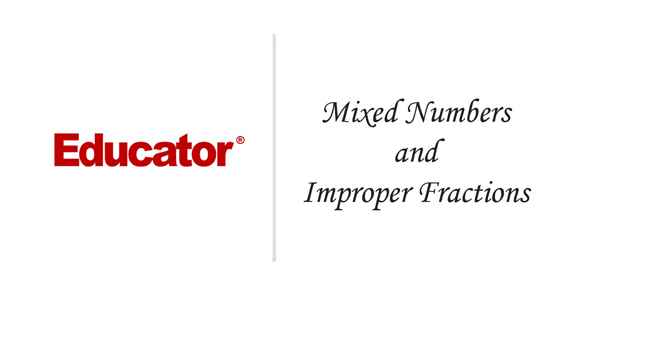Connecting...

This is a quick preview of the lesson. For full access, please Log In or Sign up.
For more information, please see full course syllabus of Basic Math
For more information, please see full course syllabus of Basic Math
Basic Math Mixed Numbers and Improper Fractions
Lecture Description
In this lesson on mixed numbers and improper fractions, our instructor first begins by explaining new concepts such as mixed number, proper fraction, and improper fraction. Then she explains how to switch between mixed number and improper fraction. She shows examples of switching fractions. Four extra video examples round up the rest of this lesson.
Bookmark & Share
Embed
Share this knowledge with your friends!
Copy & Paste this embed code into your website’s HTML
Please ensure that your website editor is in text mode when you paste the code.(In Wordpress, the mode button is on the top right corner.)
×
Since this lesson is not free, only the preview will appear on your website.
- - Allow users to view the embedded video in full-size.
Next Lecture
Previous Lecture










































 Answer Engine
Answer Engine



0 answers
Post by Jason Sun on May 15, 2020
Thanks for the examples
0 answers
Post by Zoe Chen on April 24, 2020
. com
2 answers
Last reply by: Jorge Abalo
Mon Dec 9, 2013 5:10 PM
Post by Wasay Ahmad on January 30, 2013
i have a question Mary what if in the part where you make the improper fraction a mixed number what if it doesn't have a leftover? ( 28/4 = 7 but there is no leftover)
0 answers
Post by Wasay Ahmad on January 15, 2013
thanks you so much i used to be very bad at fractions but now i know them really well this helped me with my homework thank you so much Mary also i hope he/she isnt skipping a grade
0 answers
Post by patrick elsworth on October 24, 2012
what a remarkable website is he/she really skipping a grade
2 answers
Last reply by: Joseph Zheng
Wed Apr 29, 2020 10:06 AM
Post by Ramez Hajelsawi on October 1, 2012
I am skipping a grade with this education!!!!!!!! :)
0 answers
Post by Valdo Ribeiro on December 9, 2011
Outstanding!
0 answers
Post by Michelle Giacalone on June 7, 2011
Good: These videos are fantastic for helping me review my maths.
Bad: Now I'm craving pieces of candy and slices of cake!